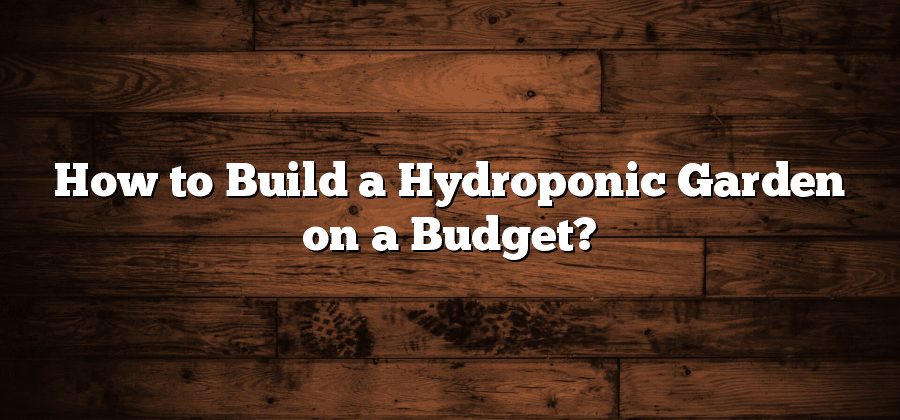Understanding the Benefits of Hydroponic Gardening
Hydroponic gardening has gained immense popularity in recent years due to its numerous benefits. One of the main advantages of this method is its ability to save water. Unlike traditional soil gardening, hydroponic systems use significantly less water as it is recycled and continuously circulated within the system. This not only conserves water resources but also helps in reducing water bills.
Another benefit of hydroponic gardening is its space-saving capability. With limited land available for gardening, hydroponics provides a practical solution by utilizing vertical space. By growing plants in a controlled environment, such as a greenhouse or indoor setup, growers can maximize their yield by stacking plants vertically. This efficient use of space allows for higher production in a smaller area, making hydroponics ideal for urban settings or areas with limited land resources.
Choosing the Right Location for Your Hydroponic System
When it comes to setting up a hydroponic system, choosing the right location is crucial for the success of your garden. One of the first factors to consider is sunlight. Most plants require at least six hours of direct sunlight each day, so it’s essential to place your hydroponic system in an area that receives adequate sunlight. South-facing windows are often the best option, as they allow for maximum sunlight exposure throughout the day. If natural light is not sufficient, you may need to invest in artificial grow lights to supplement the plants’ needs.
In addition to sunlight, it’s important to consider the temperature and humidity levels of the chosen location. Hydroponic plants thrive in a controlled environment, with temperatures ranging between 65 and 75°F (18-24°C). Avoid placing your system in areas with extreme temperature fluctuations, such as near drafty windows or heating vents. Humidity is also a significant factor, as plants can become susceptible to diseases in high humidity environments. Aim for a relative humidity level of 40-60% to create the ideal growing conditions for your hydroponic plants.
Essential Equipment and Supplies for a Budget-Friendly Hydroponic Garden
Creating a budget-friendly hydroponic garden requires careful consideration of the essential equipment and supplies. Here are the key items you will need to get started:
1. Grow Trays: These trays serve as the base for your hydroponic system and provide a platform for your plants to grow. Opt for durable and non-toxic trays that can withstand the weight of the plants and the constant exposure to water and nutrients.
2. Nutrient Solution: As hydroponic gardening eliminates the use of soil, plants rely on a nutrient-rich solution to thrive. Invest in a high-quality nutrient solution that is specifically formulated for hydroponic systems. These solutions contain the essential minerals and nutrients needed for healthy plant growth.
3. Growing Medium: Rather than soil, hydroponic gardens use different growing mediums to support the plants. Common options include coco coir, perlite, and vermiculite. Consider the requirements of your chosen plants when selecting a suitable growing medium. It should offer good drainage, aeration, and water retention capabilities.
4. pH Testing Kit: Maintaining the correct pH level is crucial for the success of your hydroponic garden. Invest in a reliable pH testing kit to regularly monitor and adjust the acidity or alkalinity of your nutrient solution. This will ensure optimal nutrient uptake by the plants.
5. Lighting System: Since hydroponic gardens are often grown indoors or in areas with limited natural light, a suitable lighting system is essential. LED grow lights are a popular choice due to their energy efficiency and ability to provide the precise spectrum and intensity of light that plants need for photosynthesis.
By investing in these essential equipment and supplies, you can create a budget-friendly hydroponic garden that will yield healthy and abundant harvests.
Selecting the Ideal Plants for Your Hydroponic Garden
When it comes to selecting the ideal plants for your hydroponic garden, there are several factors to consider. First and foremost, it is important to choose plants that are well-suited for hydroponic growing. Some plants thrive in soilless environments, while others may struggle to adapt. Researching and selecting hydroponic-friendly plants will increase your chances of success.
Another important factor to consider is the size and space requirements of the plants. In a hydroponic system, plants have limited space to grow, so it is essential to choose plants that do not require extensive root systems or take up too much space. Additionally, selecting plants with similar growth rates and nutrient requirements can help maintain a balanced and healthy hydroponic garden. By carefully considering these factors, you can ensure that you select the ideal plants for your hydroponic garden, setting yourself up for a successful and bountiful harvest.
Setting Up a Simple and Cost-Effective Hydroponic System
To set up a simple and cost-effective hydroponic system, it is crucial to have a clear understanding of the key components involved. The first step is to select the appropriate container for your plants to grow in. Many hydroponic systems utilize plastic containers, such as buckets or bins, as they are affordable and easy to find. However, it is important to ensure that the chosen container is large enough to accommodate the plants’ roots and allows for proper drainage.
Next, you will need to consider the nutrient solution and the method of delivery. Nutrient solutions are specially formulated blends that provide essential nutrients to the plants. These solutions can be purchased pre-mixed or can be created by combining the necessary nutrients in the correct quantities. Once you have the solution, it can be delivered to the plants through various methods, such as the nutrient film technique (NFT), drip irrigation, or the ebb and flow system. Each method has its advantages and disadvantages, so it is important to choose the one that suits your needs and budget.
Overall, setting up a simple and cost-effective hydroponic system requires careful planning and consideration of various factors. By selecting the right container and nutrient delivery method, you can create an efficient system that promotes healthy plant growth without breaking the bank.






